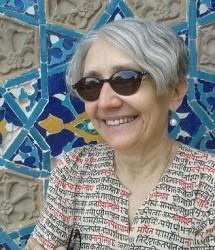Event

Please join us tomorrow, April 11, 2018, for Dr. Ines Zupanov's talk: From Mogor to Salsete; Rodolfo Acquaviva's Error. Refreshments will be served at 4:00PM in the SAST conference room, Williams 826. The talk will begin at 4:30PM. Please see below for the abstract.
-------------------------------------------
This paper pieces together the elements of the short, meteor-like life of Rodolfo Acquaviva (b. 1550, Atri, Italy - d. 1583, Cuncolim), a Neapolitan nobleman and a Jesuit, who inhabited one after another two exemplary communicative settings placed on the opposite side of the Jesuit missionary spectrum. His first missionary experience at the age of thirty was the Mughal court where he was part-time Portuguese ambassador and part-time learned religious specialist of the law of “ʿĪsā”. His next assignment three years later was very short, just a few days, and it was in the rural and borderland Portuguese Estado da Índia’s territory of Goa, where resistance to Jesuits and to Portuguese tax collectors was brewing. By looking into his life and “martyr's” death and his afterlife in Jesuit historiography - on the basis of Jesuit correspondence and hagiographical works such as Daniello Bartoli’sMissione al Gran Mogor del Padre Ridolfo Aquaviva. Sua vita et Mortepublished in Rome in 1714 - I will address the question of how missionaries had to (and sometimes failed to) adapt to specific “communicative settings” in the missionary fields.
As a first step, I will show how Acquaviva’s aristocratic habitus produced, what he thought was a “positive” effect on emperor Akbar and on a small group of his nobles. The point of emotional convergence was, in Acquaviva’s opinion, his insistence on “love” and “friendship” in his relationship with them. From Acquaviva’s eight letters written from Agra and Fatehpur Sikri, we can see that he felt he fitted hand-in-glove in the courtly setting and conceived of his mission as primarily teaching and converting Akbar through face to face dialogue. The failure of the mission, after only three years, and the inadequacy of Acquaviva’s missionary persona, comes through quite clearly in the treatise (Mongolicae Legationis Commentarius)written by his Catalan co-missionary Antoni de Monserrat, who shared the enthusiasm and deception of the first Jesuit mission to the Mughal court.
As a second step, I argue that Acquaviva may have mistakenly treated the situation in the village of Cuncolim (Salsete region of Goa) as another of the courtly encounter settings that he knew so well. This misunderstanding cost him his life, but earned him the “crown of martyrdom”. Acquaviva’s missionary life - if considered from outside of the narrative arc constructed around it - was filled with desperate gestures of a young, noble, and impatient Italian Jesuit and had a logical end in “martyrdom,” a kind of failure to find a better verbal and performative solution. And most importantly, he was unable or unwilling to invest in building emotional ties with the “villagers”. Even if he did try, since learning languages would enable the next generation of Jesuit missionaries to do so, Acquaviva was too closely associated with Portuguese soldiers and tax collectors. However, if Jesuits failed to communicate their message (of “love”), the gauncars(village chieftains) of Cuncolim also made a mistake that cost them their lives and the ownership of their land for another four hundred years.
